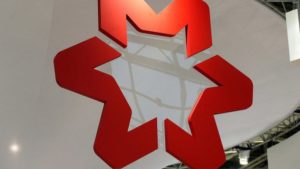
In its new video on the YouTube platform, the Kiev-based information and analytical center Experts Club has published a rating of countries with the highest probability of sovereign default. The ranking considered both economic and political factors that could lead states to default.
As Maxim Urakin, the founder of Experts Club, PhD in Economics, noted, the current economic situation in the world is alarming.
“The world economy is facing unprecedented challenges and many countries are on the verge of financial collapse. Under such conditions, it is crucial to understand which states are at the greatest risk of default in order to take appropriate measures,” he emphasized.
State default is a situation when a country cannot fulfill its debt obligations to creditors. According to Maxim Urakin, default can have catastrophic consequences for the country’s economy and its citizens.
“Default is not just a technical event. It is a tragedy for millions of people who may lose their jobs, their savings and even access to basic social benefits. That is why we monitor the economic situation in various countries so closely,” Urakin added.
The Experts Club 2024 ranking of countries with the highest probability of default includes Argentina, Lebanon, Sri Lanka and several other countries already facing serious economic problems. These countries are characterized by high levels of external debt, economic instability and political crises.
Experts Club also identified several countries that are at risk in the medium term. Among them are Argentina and Venezuela, which are already facing economic instability and high levels of debt, as well as Greece and Italy, which are dependent on external creditors.
|
Experts Club Rating |
Country |
Current international rating |
| 1. | Argentina | CCC- |
| 2. | Ghana | in default |
| 3. | Sri Lanka | in default |
| 4. | Lebanon | in default |
| 5. | Zambia | in default |
| 6. | Pakistan | CCC |
| 7. | Mozambique | CCC |
| 8. | Ukraine | CCC |
| 9. | Ethiopia | CCC |
| 10. | Cameroon | CCC+ |
| 11. | Bolivia | CCC+ |
| 12. | Burkina Faso | CCC+ |
| 13. | Suriname | in default |
| 14. | Tunisia | CCC |
| 15. | Egypt | B- |
| 16. | Nigeria | B- |
| 17. | El Salvador | B- |
| 18. | Honduras | B- |
| 19. | Laos | B- |
| 20. | Venezuela | in default |
“We see that countries like Argentina and Venezuela continue to be on the verge of default due to internal economic instability and external pressures. Also of concern is the situation in Greece and Italy, which are highly dependent on international loans. The risk of default remains high in these countries,” commented Urakin.
Special attention this year is paid to Lebanon, which, according to the economist, is “in a state of political and economic crisis, with extremely high debt to GDP.” This makes the country particularly vulnerable to a possible default.
Maxim Urakin also elaborated on the factors that could lead to default. Among them, he emphasized the high level of external debt relative to GDP, economic instability and dependence on external financing.
“Countries with debt-to-GDP ratios above 100% are particularly vulnerable. Lebanon, Cyprus and Greece are examples. Economic instability and political crises in countries such as Argentina, Venezuela and Pakistan also increase the risk of default,” he explained.
Dependence on external financing is another significant factor.
“Countries that depend on external loans to cover budget deficits, such as Spain and Italy, could face difficulties if conditions in international financial markets deteriorate,” Urakin added.
In a commentary on the rating, Maxim Urakin noted that the consequences of a default for a country and its citizens can often be devastating.
“For government agencies, default means restricted access to international financial markets, lower credit rating and the need for painful economic reforms. For citizens, it turns into inflation, devaluation of the national currency, rising unemployment and lower living standards,” the expert explained.
Urakin also emphasized that default may lead to the growth of social discontent and political instability, which may aggravate the situation in the country. He also assured that Experts Club will continue to closely monitor the economic situation in the world and provide timely relevant data to help countries and investors to minimize risks and avoid defaults.
You can learn more about defaults and the presented rating from the video on the YouTube channel of Experts Club:
You can subscribe to the Experts Club channel by clicking here:

At the end of 2022, 6 Ukrainian junior squash players are in the top 10 in their age categories.
In 2022, the Ukrainian sport, despite the war, not only survived, but also continued to develop. Our athletes in this difficult time continue to please us with decent results in the international arena. And if in such popular sports as soccer and boxing we managed to maintain the pre-war development potential, many lesser-known disciplines encountered significant difficulties last year. We can mention here the cancellation or postponement of competitions, as well as the disruption of the training process.
Squash, on the whole, successfully coped with the challenges of 2022, maintaining a positive momentum of development. In August, on the courts of the capital fitness center “SPORT LIFE” there was a charity tournament “Zenit Ukraine Open 2022”. Athletes from Romania, the United States, Moldova, Lithuania as well as players from many regions of Ukraine competed for awards in five categories.
The organizers of the largest squash tournament in Ukraine are planning to hold it this year as well.
“We hope that our Zenit tournament will return this year to the sunny Odessa from which it had to move to Kiev due to the military action,” said one of the organizers of this squash tournament, Maxim Urakin.
Very good results on the courts of international tournaments are shown by Ukrainian juniors. In particular, six Ukrainian athletes are in the top 10 in their age categories. Dmytro Scherbakov, who currently occupies the second position in the world ranking of young squash players BU19, was able to achieve the greatest result last year.
You can find more details about the positions of Ukrainian juniors in the world squash rankings in the infographic:
As Dmitry Shcherbakov, the head of racquet sports of the SportLife network, stated, in 2022 our juniors proved that they are one of the strongest in Europe.
“At the team championship of Europe-2022 among juniors to 17 years, our squash players got the bronze medal, leaving behind only England and France,” – Shcherbakov said.
Vyacheslav Savelov, children and juniors squash coach, thanked everyone who supported the sport in 2022.
“Many thanks to sponsors, patrons, coaches, parents of our children and all those who supported and supported Ukrainian squash and our athletes during this difficult time,” – he stressed.
The high results of our athletes in the youth and adult ratings give hope for the successful development of squash in Ukraine in 2023.

Among Ukrainian politicians, Volodymyr Zelensky (39.5% of Ukrainians trust him), Vitali Klitschko (33.8%), Serhiy Prytula (31.6%) and Volodymyr Groysman (31%) enjoy the highest level of trust from the population among Ukrainian politicians, evidenced by the results of an all-Ukrainian public opinion poll conducted by the Kyiv International Institute of Sociology (KIIS) from February 23 to March 1, 2021.
According to the survey, 39.5% of Ukrainians trust President Volodymyr Zelensky, while 54.3% do not trust him (the balance of trust-distrust is -14.7%); Kyiv mayor Klitschko is trusted by 33.8%, 52.8% do not trust him (balance -19%); public activist, volunteer and TV presenter Prytula is trusted by 31.6%, 34% do not trust him (balance -2.3%); ex-prime minister Volodymyr Groisman has trust of 31%, 53.1% have no confidence in him (balance -22.1%); Chairman of the Verkhovna Rada Dmytro Razumkov has trust of 28.3%, no trust from 30.6% (balance -2.3%).
At the same time, 26.3% of Ukrainians trust MP Yulia Tymoshenko, 67.6% have distrust of her (the balance of trust and distrust is 41.3%); MP Yuriy Boiko has trust of 24.6%, 52.2% have no confidence in him (balance -27.6%), ex-MP Oleh Liashko is trusted by 23.2%, 69.5% do not trust him (balance -46.3%), 22.4% trust Ihor Smeshko, 22.6% do not trust him (balance -0.2%), the fifth president, Petro Poroshenko, is trusted by 21.9%, 73.5% have no confidence in him (balance -51.6%).
The level of trust in other politicians is below 20%.
If we compare the percentage of confidence in a politician with the same indicator in January 2021, the greatest changes can be traced in the case with Zelensky – an increase from 35.6% to 39.5%, Prytula – an increase from 27.3% to 31.6%, Boiko – a decrease from 28.9% to 24.6%, Medvedchuk – a decrease from 19.6% to 16.2%, Palytsia – a decrease from 5.3% to 3%.
The respondents were also asked a similar question about trust in the leaders of other states.
As it turned out, 30.3% Ukrainians trust Alexander Lukashenko, while 56.8% do not trust him, so his balance of trust-distrust is -26.5%. Moreover, compared to January 2021, the level of trust in him decreased.
Joe Biden is trusted by 29.4% of Ukrainians, and not trusted by 25.5%. Its balance is positive and amounts to + 3.9%, respectively. Compared to January 2021, no significant changes have been observed.
Vladimir Putin was the most unfavorable among Ukrainians – 82.4% do not trust him versus 10.8% of those who trust (-71.6% balance).
The public opinion poll was conducted by the Kyiv International Institute of Sociology from February 23 to March 1, 2021 using computer-assisted personal interviewing (CAPI). Some 1,207 respondents living in 86 settlements of all regions of Ukraine (except for the Autonomous Republic of Crimea) were randomly selected during three rounds with a quota selection at the final round, which is representative for the population of Ukraine aged over 18.
The margin of sampling error for the full sample is not more than 2.9% for indicators close to 50%, 2.5% for indicators close to 25%, 1.9% for indicators close to 12%, and 1.3% for indicators close to 5%.

Fitch Ratings has affirmed Ukraine’s Long-Term Foreign-Currency (LTFC) Issuer Default Rating (IDR) at ‘B’ with a stable outlook, the rating agency said on its website.
“The ratings of Ukraine reflect its credible macroeconomic policy framework that had lowered inflation and narrowed fiscal deficits prior to the coronavirus shock, and a record of multilateral support. These strengths are set against low external liquidity relative to high financing needs associated with large sovereign debt repayments, a vulnerable, albeit improving, banking sector, and weak governance indicators. The coronavirus shock has at least temporarily reversed Ukraine’s improvements made in recent years in terms of a declining debt burden, normalization of growth prospects after the 2014-2015 geopolitical and economic crises, and reduced growth volatility,” it said.
“Ukraine’s new IMF program has been designed to reduce financing constraints and support a recovery in international reserves. Ukraine received the first tranche ($2.1 billion) under a $5 billion 18-month Stand-By Arrangement (SBA) for budget support in June. The sovereign also issued a $2 billion eurobond in July. Easing of external-financing constraints allowed the sovereign to buy back external bonds maturing in 2021-2022 and to repurchase close to 10% of its outstanding GDP warrants,” the report says.
“Fitch estimates that Ukraine has met close to 68% of its 2020 fiscal financing needs of $23.5 billion ($14.2 billion in amortizations including debt prepayments). Fitch expects one additional disbursement from the IMF SBA ($700 million) and the first tranche of a new EUR1.2 billion loan in 2020. Available domestic liquidity and government cash holdings provide room to accommodate remaining financing requirements, which in turn are dependent on the pace of expenditure implementation. Domestic banks, most notably state-owned, have increased exposure to government debt, as foreign investors have reduced their share of domestic government bonds by about $1.5 billion since February to 16% (not including National Bank of Ukraine, NBU, holdings),” according to the document.
“International reserves rose to $29 billion at the beginning of September, due to central bank FX purchases (net $1.2 billion YTD in 2020) and external financing. We expect international reserves to finish 2020 at $27.4 billion or 4.5 months of current external payments (CXP), slightly above the projected 4.1 months for the ‘B’ median. In our forecast for a gradual return of the current account deficit and continued access to external financing, reserve coverage will average 3.8 months of CXP in 2021-2022. External liquidity, measured by the country’s liquid external assets-to-liquid external liabilities, will rise to 112% for 2021, close to the 118% forecast for the ‘B’ median,” it reads.
“External financing needs have declined compared with previous years (35% of international reserves) in spite of large debt repayments, reflecting higher international reserves and a projected current account surplus (2.5% of GDP) in 2020, due to fairly resilient exports and remittances, sharp decline in imports and improved data availability on reinvested earnings by foreign investors. External financing needs will rise in 2021-2022 with the return to a current account deficit (reaching 3.5% of GDP by 2022). External sovereign amortizations (government plus NBU) will decline from $6 billion in 2020 but will remain large averaging $4.3 billion in 2021-2022 (bond repayments of $2 billion and $1 billion, respectively),” Fitch experts noted.
“Fitch considers that continued engagement with the IMF is key for Ukraine to maintain access to external financing. However, the IMF SBA implementation risks are significant given Ukraine’s poor record from previous programs and potential judicial rulings and legislative initiatives that lead to reform reversals. In Fitch’s view, unexpected and frequent cabinet changes early in the year, especially those related to key economic positions such as the Minister of Finance, and political pressure on NBU, leading to the governor’s resignation in July, create policy uncertainty. In addition to eroding hard-earned policy credibility, reduced central bank independence could lead to reversal in the improvements in macroeconomic and financial-sector stability, constrain access to external financing and increase Ukraine’s vulnerability to shocks,” they added.
“Inflationary pressures remain subdued (2.4% y-o-y in July; core 3%), but inflation is expected to approach the 5% NBU target by end-2020 due to higher energy and food prices as well as recovering domestic demand. Fitch expects inflation to average 5.3% in 2021 and 5.7% in 2022, above the forecast 4.4% and 4.8% ‘B’ medians. The NBU cut policy rates to a record low 6% in June (750bp in H1, 2020) in response to the pandemic, but further easing could be constrained, in Fitch’s view, by rising inflationary pressures and the proposal of a significant minimum wage increase in 2021,” they stated.
“Fitch maintains its April forecast that the economy will contract 6.5% in 2020. The economy reportedly contracted 11.4% in Q2, 2020. Improving retail sales, industrial production and construction reflect reviving consumption and investment, while faster expenditure implementation in H2, 2020 and lower interest rates will support recovery. We expect growth to reach 3.8% and 3.5%, respectively, in 2021 and 2022, in line with our medium-term forecasts for Ukraine. However, downside risks to our forecasts remain, given uncertainty around the extent and duration of the coronavirus outbreak, and the duration or re-introduction of restrictions, especially given the reported uptick in coronavirus cases in Ukraine,” Fitch said.
“Fitch forecasts the general government deficit to reach 6.5% of GDP in 2020, below the projected 7.7% under the IMF SBA and 7.3% ‘B’ median. Large dividend payments from state-owned companies (1.8% of GDP), and recovering tax collection (except for import-related taxes) have supported government revenues, while expenditure growth remains moderate YTD and concentrated in social transfers and health spending. We forecast fiscal consolidation to proceed at a gradual pace, with the general government deficit shrinking to 5.4% of GDP in 2021 and 4.2% in 2022. Although the government has indicated they intend to pursue expenditure initiatives to support growth such as the proposed minimum wage increase (up to 30% in 2021), the actual pace of fiscal consolidation will depend on continued engagement with the IMF and available financing,” it added.
“General government debt will increase to 57.4% of GDP (65.1% including guarantees) and 60% by 2022, from 44.4% (50.4% with guarantees) in 2019 and close to the forecast 65.3% ‘B’ median. Fitch forecasts that Ukraine general government debt will stabilize at around 60% in 2022-2023 and decline gradually thereafter with the return of primary surpluses. Risks to the debt dynamics stem from a weaker exchange rate (64% foreign currency-denominated debt), lower-than-expected growth or failure to narrow the fiscal deficit,” it summarized.

Fitch Ratings has upgraded Ukrainian integrated steel company Metinvest B.V.’s (Metinvest) Long-Term Local- and Foreign-Currency Issuer Default Ratings (IDRs) and senior unsecured bonds to ‘BB-‘ from ‘B+’. The Outlook is Stable.
“The upgrade follows Ukraine’s Country Ceiling upgrade to ‘B’ from ‘B-‘on 6 September 2019. The IDR of Metinvest remains two notches above the Country Ceiling,” Fitch said in a report.
Fitch said that this happened due to its comfortable hard-currency (HC) external debt service coverage, and also its ‘BB’ category business and financial profiles.
In addition, S&P Global Ratings raised Metinvest’s issuer credit rating and its issue ratings on the existing notes to ‘B’ from ‘B-‘. The Outlook is Stable.
S&P said that the Ukrainian steel maker Metinvest has built a track record of balanced financial policy in the past 18 months, with relatively low gearing and positive free cash flow, supporting an adequate spending between growth and shareholder returns.
The two agencies also assigned preliminary ratings to senior unsecured notes of at least $500 million proposed by Metinvest to issue at once after purchase for cash up to $440 million notes in circulation: Fitch – ‘BB-(EXP),’ and S&P – ‘B.’
“The proposed senior unsecured notes of at least $500 million will smooth the maturity profile and strengthen liquidity,” S&P said.
Fitch expects Metinvest’s HC external debt service cover ratio to be comfortable at above our 1.5x threshold on a 18-month rolling basis, allowing the company’s IDR to remain two notches above Ukraine’s ‘B’ Country Ceiling . The top line of the ratio is mainly comprises substantial export EBITDA, aided by abroad EBITDA and cash. The bottom line of the ratio represents HC debt service, comprising principal repayments and interest payments, which are fairly smooth over 2019-2022. The company faces a $945 million notes maturity in 2023 but this would be addressed by the upcoming notes issue, which will improve HC external debt service coverage for 2023.
Fitch said that since the last rating action in April 2019 we have revised Metinvest’s full-year EBITDA down to slightly above $1.5 billion in both 2019 and 2020 and slightly under $1.5 billion in 2021 and 2022, reflecting sharper-than-previously expected price contraction across the steel value chain.
Fitch said that Metinvest is an important eastern European producer of metal products (8.8 million tonnes in 2018) and iron ore (27.3 million tonnes of concentrate and pellets in 2018), with around 300% self-sufficiency in iron ore but only 40%-45% in coking coal.
“The steel segment’s proximity to Black Sea and Azov Sea ports allows the company to benefit from both cheaper steel exports and seaborne coal imports logistics. The operations are also further integrated into downstream operations in Italy, Bulgaria and the UK. Partial integration into key raw materials and exposure to high value-added products help Metinvest mitigate but not avert steel market volatility,” Fitch said.
Fitch said that the conflict in eastern Ukraine continues to pose risks to day-to-day operations. Metinvest’s exposure to the risks of conflict escalation remains high relative to its EMEA peers, although Fitch admitted that most of its 1H19 EBITDA is generated by its mining assets located substantially farther from the conflict zone.
S&P expects that the company will maintain an adjusted funds from operations (FFO) to debt of 35%-40% in 2019 and 2020, well in the range commensurate with the current ‘B’ rating (20%-40%), with a positive discretionary cash flow (free cash flow after capex and dividends).
“We believe that the current market conditions will have a mixed impact on the company’s results in 2019,” S&P said.
“We expect Metinvest to benefit from the abnormal iron ore and pellet prices. Under our calculations, the EBITDA would need to fall to about $1.1 billion in 2020, compared with $1.5 billion-$1.7 billion in our base case, before witnessing a pressure on the rating,” S&P said.

Fitch Ratings has upgraded Ukraine’s Long-Term Foreign- and Local-Currency Issuer Default Ratings (IDR) to ‘B’ from ‘B-‘, the outlooks are positive, according to a report on the rating agency’s website.
“Ukraine has demonstrated timely access to fiscal and external financing, improving macroeconomic stability and declining public indebtedness, while a shortened electoral period has reduced domestic political uncertainty. Expected macroeconomic policy continuity, the new government’s strong stated commitment to structural reforms and engagement with IFIs mean that Fitch expects further improvements in creditworthiness,” the report says.
“President Volodymyr Zelensky’s strong popular support and his party’s control of government and parliament provide the government with a uniquely strong position to move ahead with its reform-minded policy agenda. After a commanding victory in the second round of presidential elections, the president’s party Servant of the People (SOP) obtained control of the Verkhovna Rada (256 out of 450 seats) in snap parliamentary elections (originally scheduled for end October). The recently formed government under Prime Minister Oleksiy Honcharuk includes technocratic, pro-western and reform-minded ministers. Key economic policy makers such as Minister of Finance Oksana Markarova remain in their positions, supporting the continuity of policies underpinning reduced macroeconomic imbalances and improved stability,” Fitch said.
“The new prime minister intends to negotiate a new and longer program with the IMF, possibly an Extended Fund Facility (EFF), in the near term. The high likelihood of continued IMF engagement will facilitate access to official and market financing to meet large sovereign debt repayments in 2020-2021, and serve as an anchor for policies and reforms that could potentially lift growth prospects,” the agency experts stated.
“Prudent fiscal management, stable growth, declining interest rates and moderate exchange rate depreciation pressure will support continued government debt reduction. We expect government debt to decline to 47.9% of GDP (55.8% including guarantees) by end-2019, down almost 20 p.p. from the peak of 69.2% (80.9% including guarantees) in 2016 and below the current 57.5% ‘B’ median, and reach 44.4% by 2021. Government debt dynamics are highly exposed to currency risk as 67% is foreign currency denominated, but greater non-resident participation in the local bond market will help increase the share of local currency debt and extend maturities,” according to the document
“The long-awaited increase in Ukraine’s credit rating was made possible thanks to macroeconomic stabilization, a decrease in government debt and a reduction in political risks. This means that confidence in Ukraine is growing, and the risks associated with our creditworthiness are decreasing. And most importantly, the cost of borrowing will decrease,” Finance Minister of Ukraine Oksana Markarova said.
© 2016-2025, Open4Business. All rights reserved.
All news and diagrams placed on this Web site is made for internal use. Its reproduction or distribution in any form are welcome in case of placing a direct hyperlink to a source. Reproduction or distribution of information which contains Interfax-Ukraine as a source is prohibited without the written permission from the Interfax-Ukraine news agency. Photoes placed on this site are taken from open sources only; rightholder are welcome to make demands to info@open4business.com.ua , in this case we are ready to put your copyright to a photo or replace it.